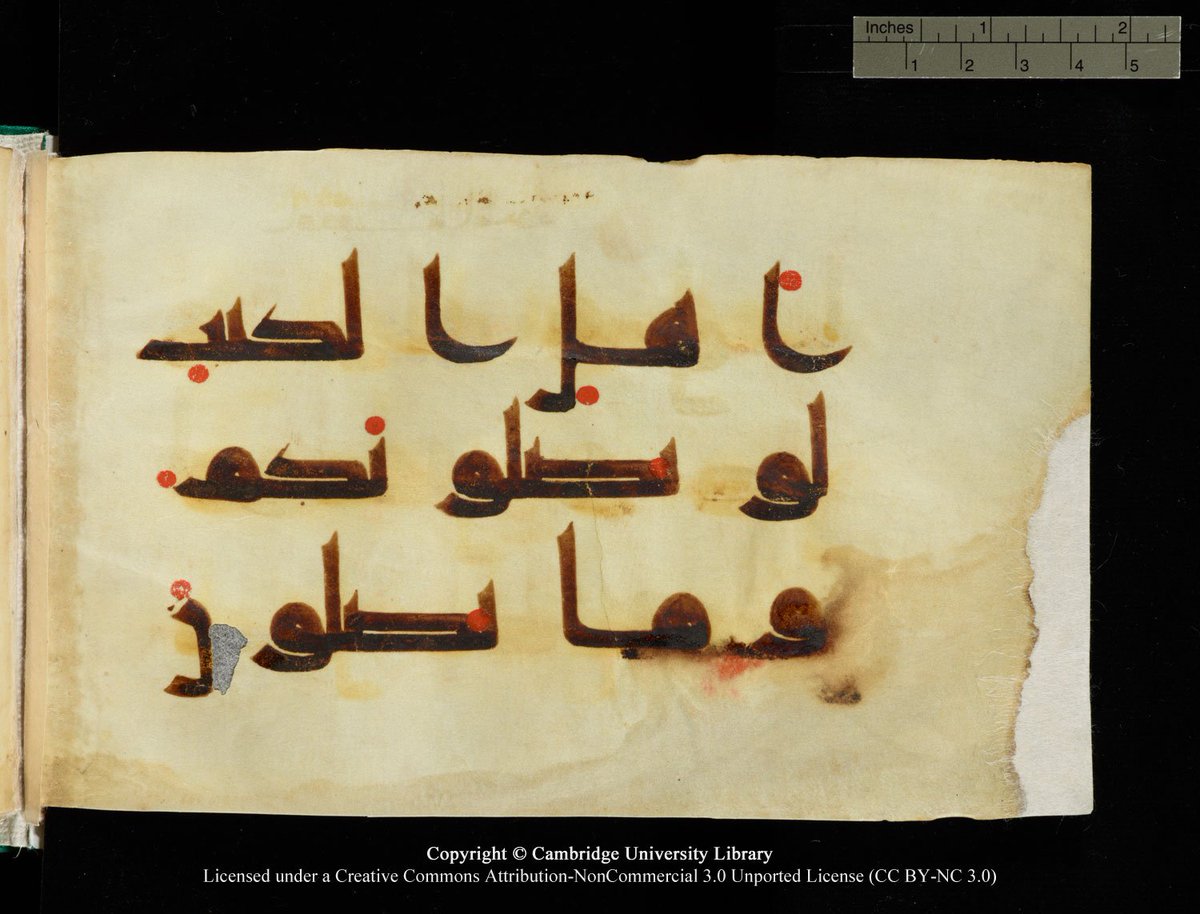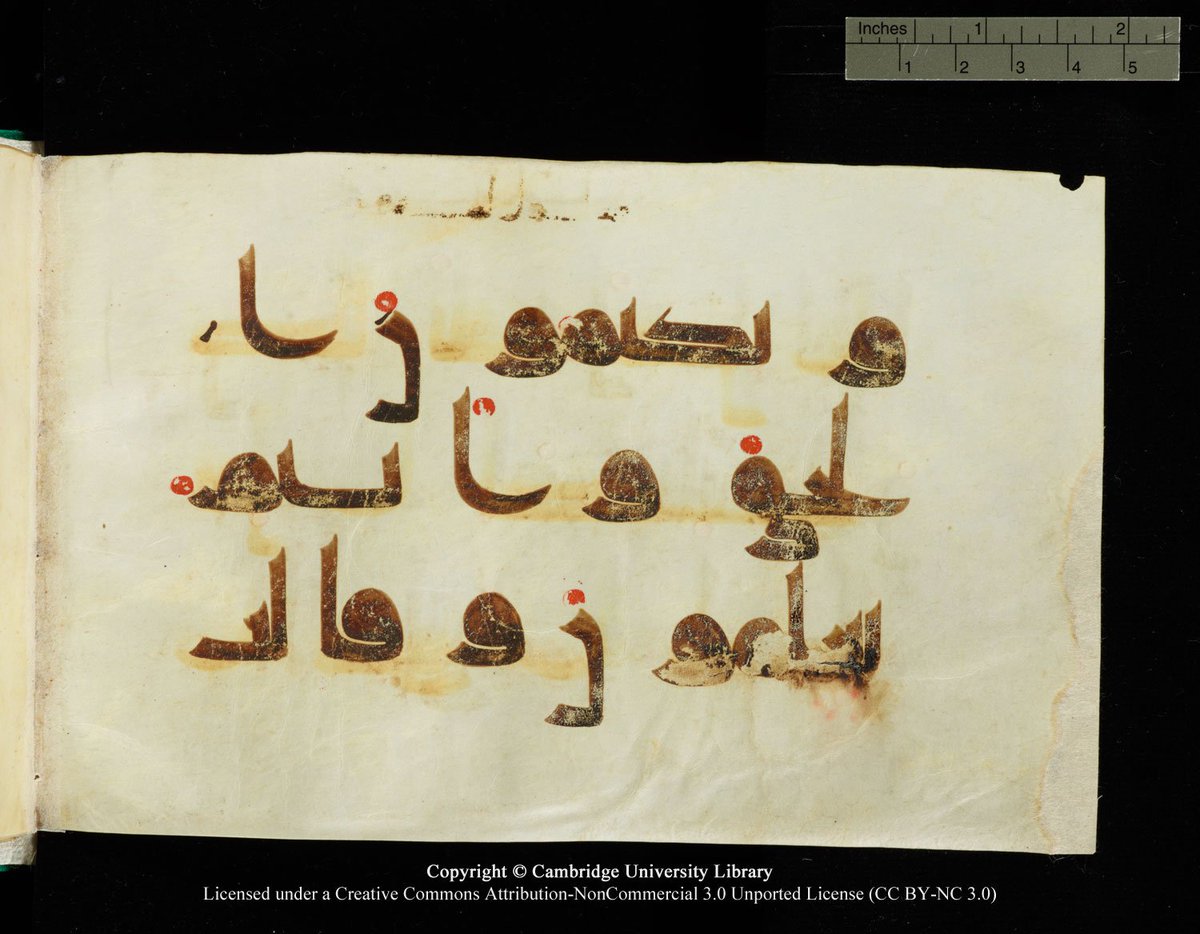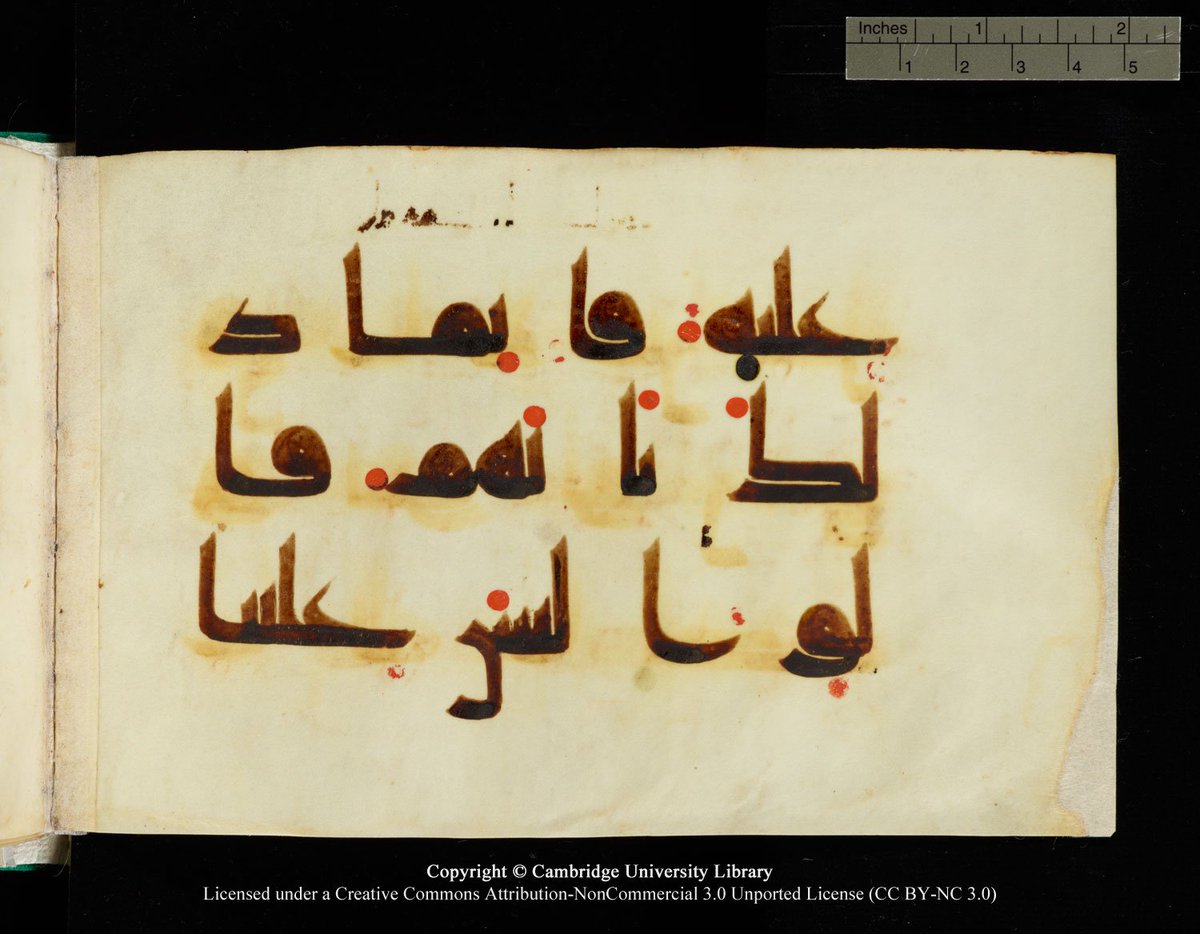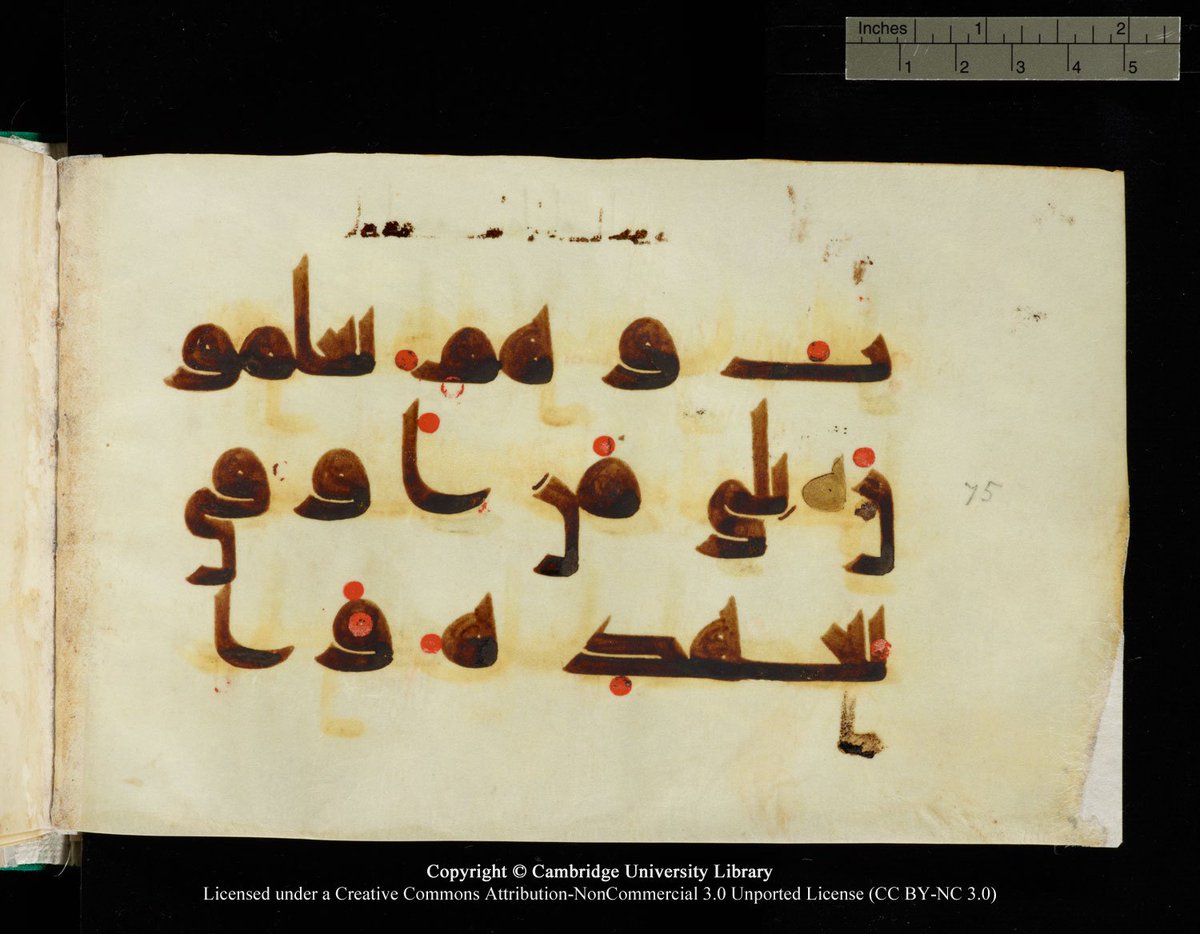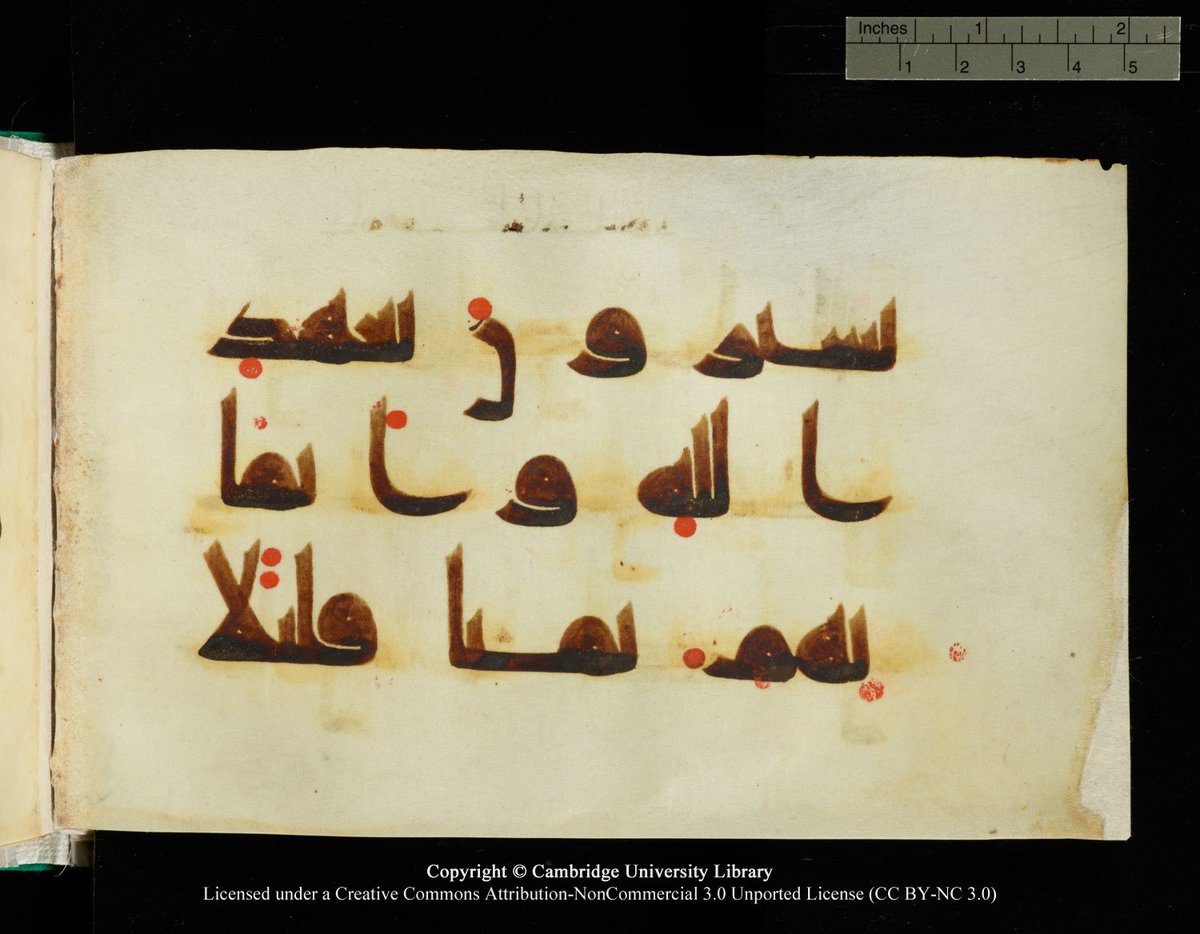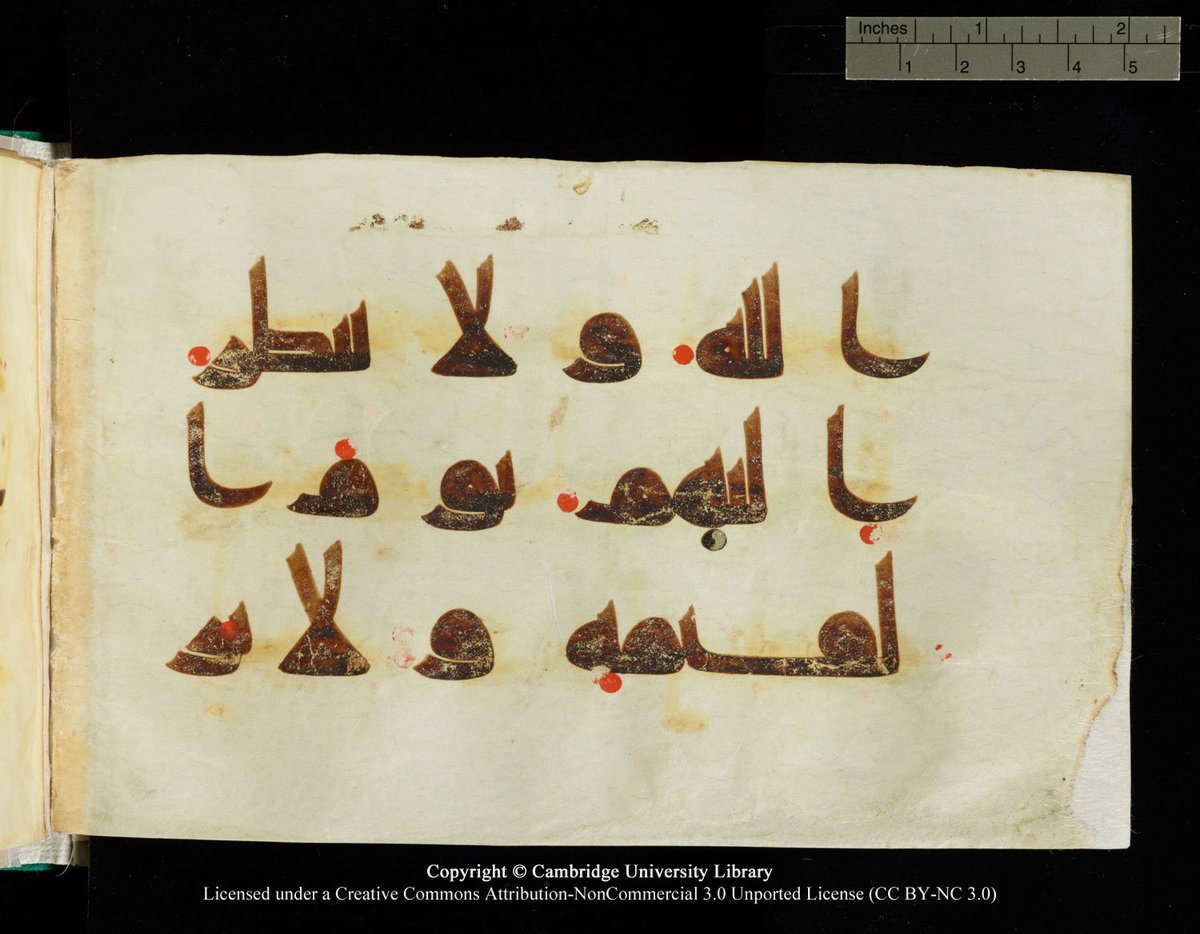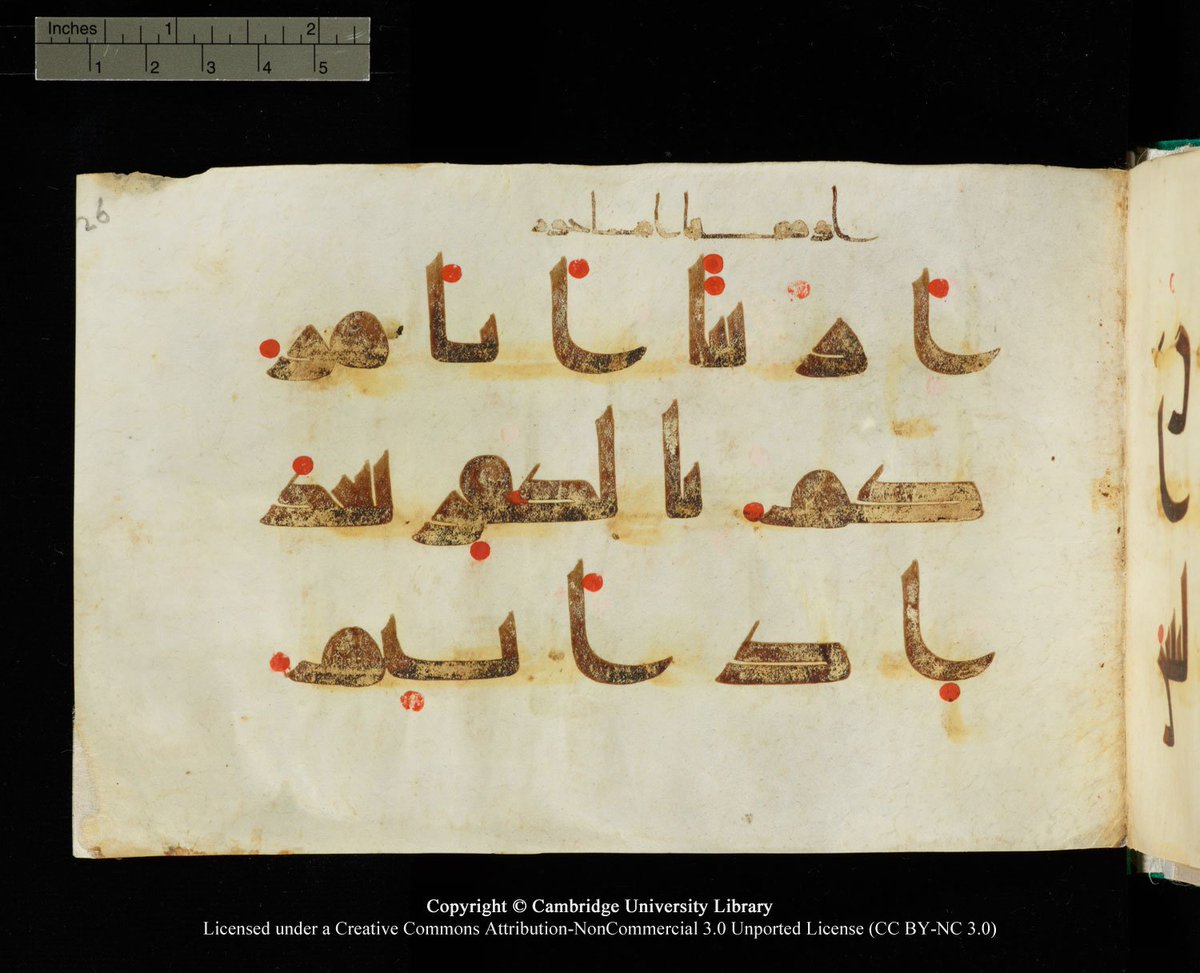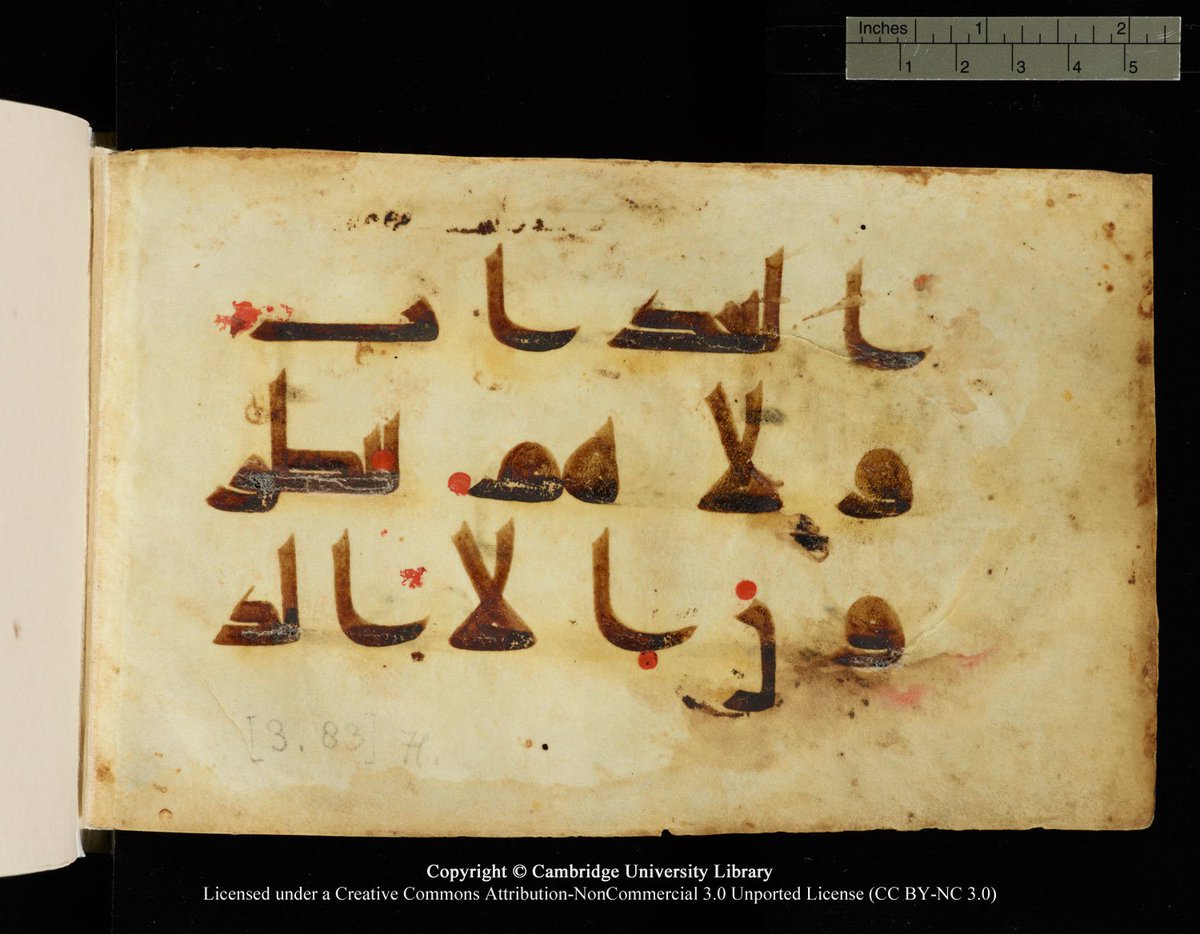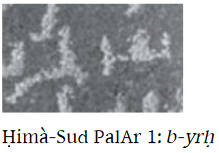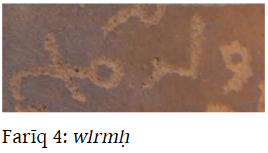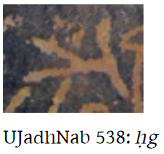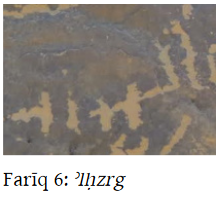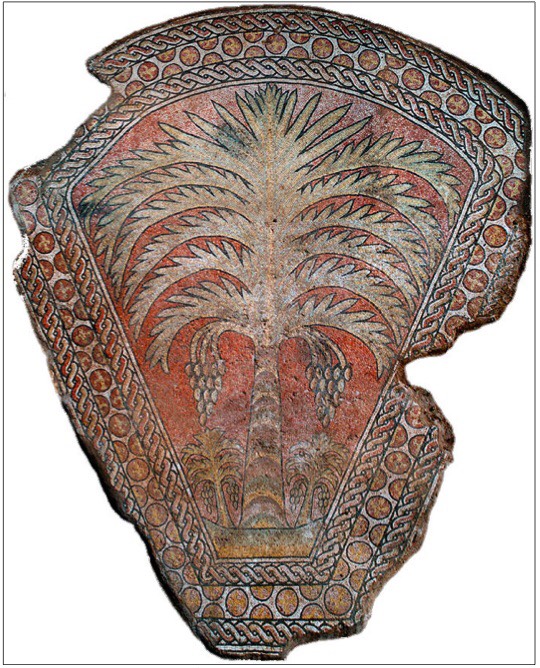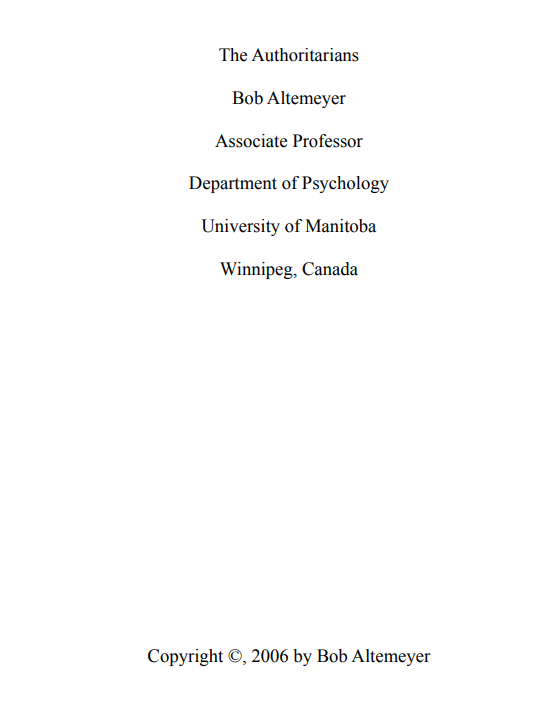It's exquisitely written with only three lines to the page.
Not a single one of the canonical readings has that pattern. This manuscript is therefore non-canonical.
Green is only occasionally used and does not seem to form a consistent subsystem.
5v, l. 1 مِں بعدِ هُ: unharmonized -hū.
5v, l. 3: حا ححٮم: Cairo edition has حججتم.
10v, l. 1-2: ىآٮٮٮِ : written with an extra denticle compared to the Cairo Edition بايت. This is very common in early mss.
12v, l. 3 ا لٮها: al-nahāri is not marked for ʾimālah, and therefore this reading does not have ʾimālah of stem-final -ār-i(n) of ʾAbū ʿAmr, al-Kisāʾī (and Warš bayna-bayn)
16v, l. 1-2: ٮُوَ دِ هُ: yuʾaddi-hū. Most canonical readers read yuʾaddi-hī, but Šuʿbah ʿan ʿĀṣim, ʾAbū ʿAmr and Ḥamzah read yuʾaddi-h; Qālūn ʿan Nāfiʿ reads yuʾaddi-hĭ.
17v, l. 4 علٮهُ: ʿalay-hu. Green marks علٮهِ ʿalay-hi/ī, the only canonical reading.
18v, l. 2: Counting this verse as 65 is consistent with the Kufa and Basra (Spitaler 1935: 34f.).
20v, l. 2 اِ لٮهمُ : Green marks اِ لٮهِم ʾilayhim(ū), in line with all canonical readers but Ḥamzah. The main vocalisation should presumably be understood as marking a non-canonical unharmonized ʾilayhumū.
24v, l. 3 ٮعلمو: green marks ٮُعَلِمو: tuʿallimūna, (ʿĀṣim, Ibn ʿĀmir, Ḥamzah, al-Kisāʾī, and Ḫalaf). Main reading unmarked.
26v, l. 1 [ٮمںو ں]: This as 80 follows Kufa and Basra (Spitaler 1935: 34f.).
27r, l. 1 ا ٮٮٮُڪمُ: ʾātaytu-kumū Green marks ا ٮٮنٰڪمُ ʾātaynā-kum(ū) (Nāfiʿ, ʾAbū Jaʿfar).
27r, l. 3 حَاَ ڪمُ : jāʾa-kumū. Green marks حِاَ ڪمُ jēʾa-kum(ū), a form of ʾimālah attributed to Ḥamzah, Ḫalaf and Ibn ʿĀmir.
30r, l. 3 يٮعو ںَ: yabġūna (ʾAbū ʿAmr, Yaʿqūb and Ḥafṣ ʿan ʿĀṣim). Green marks تٮعو ںَ tabġūna (all other canonical readers).
31r, l. 2 اِ لٮهُ: ʾilayhu Green marks اِلىهِ ʾilayhi/ī, the only known canonical reading.
31r, l. 2-3 تُر حَعو ںَ: turjaʿūna. Green يَرحِعونَ yarjiʿūna, (Yaʿqūb); yurjaʿūna = Ḥafṣ
35v, l. 1 علٮهمُ: Green علىهِم ʿalayhim(ū) (all canonical readers but Ḥamzah). The main vocalisation should presumably be understood as marking a non-canonical unharmonized ʿalay-humū.
cudl.lib.cam.ac.uk/view/MS-ADD-01…
corpuscoranicum.de/handschriften/…
As should be clear, the main vocalisation does not follow any canonical reading we know (although most elements in it are known). With this manuscript we can reconstruct this reading.
Q3:62:
al-qaṣaṣu l-ḥaqqu wa-mā min ʾilāhin ʾillā ḷḷāhu wa-ʾinna ḷḷāha la-huwa l-ʿazīzu l-ḥakīmu (62) fa-ʾin tawallaw fa-ʾinna ḷḷāha ʿalīmun bi-l-mufsidīna (63)
huwa l-hudā wa-ʾumarnā li-yusallima li-rabbi l-ʿālamīna (71) wa-ʾan ʾaqīmū ṣ-ṣalāta wa-ttaqū-hu
I did not proofread these in detail, so please excuse any typos or mistakes, but feel free to point them out!



















